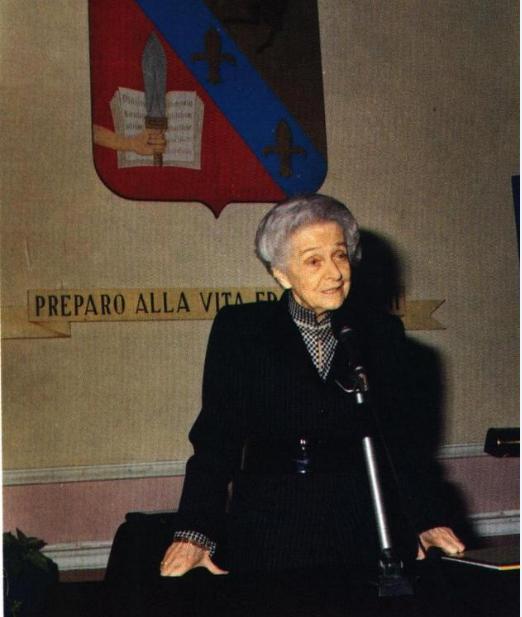It was the year 1986, Rita Levi-Montalcini receives the Nobel Prize in Medicine shared with Stanley Cohen. The recognition opens the door to an unexpected phase full of requests, unanswered letters and prestigious assignments. The scientist feels a sense of default and inadequacy weighing upon her.

It is difficult to think how a woman of such cultural depth is not fully and proudly aware of her fame, especially in the scientific field. But it is she herself who explains that she does not like to be considered "a prominent figure in the intellectual circles".
Life, thought and discoveries
The nervous field had already been a favorite field at the dawn of her university career which began in Turin, the city that gave her birth in 1909. Entered the then famous Institute Joseph Levi where he graduated in medicine, he forms a strong bond with the professor. In 1938 the Semitic laws forbid the participation of Jews in university life and the scientist moved to Belgium.
During the Second World War, close to the microscope and far from everyone, the Levi-Montalcini duo returned to Italy and works in a neuro-embryology laboratory set up at home. Receives an invitation from the neuro-embryologist Victor Hamburger in the 1947 at Washington University of St. Louis, United States. She forms a friendship with the scientist who, like her, had to escape from the Hitler regime.
Arrived in Brazil with the support of another great friend of hers, Hertha Meyer, her colleague allows her to work in a well-equipped laboratory. If someone does not recognize us a merit, think that it has also been done towards the Italian scientist. The neurobiologist, in fact, for a period of her life saw the publication of discoveries without her reference. However, there is also a great satisfaction when he puts on paper the results on the nervous system obtained together with Cohen.

The commitment, after years and years of hard work, leads to the discovery of nerve fiber growth factor (NF extension) which is worth the Nobel Prize. Back in her country, she founds and directs the Institute of Cell Biology at the CNR, the national research council.
Rita Levi Montalcini, not just science
Rita Levi-Montalcini in addition to an illustrious scientist, she was a life senator and intellectual of the Accademia dei Lincei, the oldest scientific academy in the world. President of the foundation Rita Levi Montalcini Onlus, has invested in the culture of women and obtained honorary degrees both in Italy and abroad.
Written by her, in collaboration with Giuseppina Tripodi, the book The hourglass of life paints the most salient features of his career. The text escapes Montalcini's decision to throw away the work that has set the salient phases of her life, uninteresting in her opinion. We owe thanks to the collaborator who brought the book to us.
The purpose of life for her? He explains it with these words in an interview with Fabio Fazio: not only to love your neighbor, but to make yourself useful. A woman projected to the future even a few months after her centenary.
“It may seem strange that a woman who has lived almost a century thinks about the future, but I don't care at all to know how and when I will die. What can remain of me are the sages, the messages based on knowledge, not on ourselves but on the world around us ".




